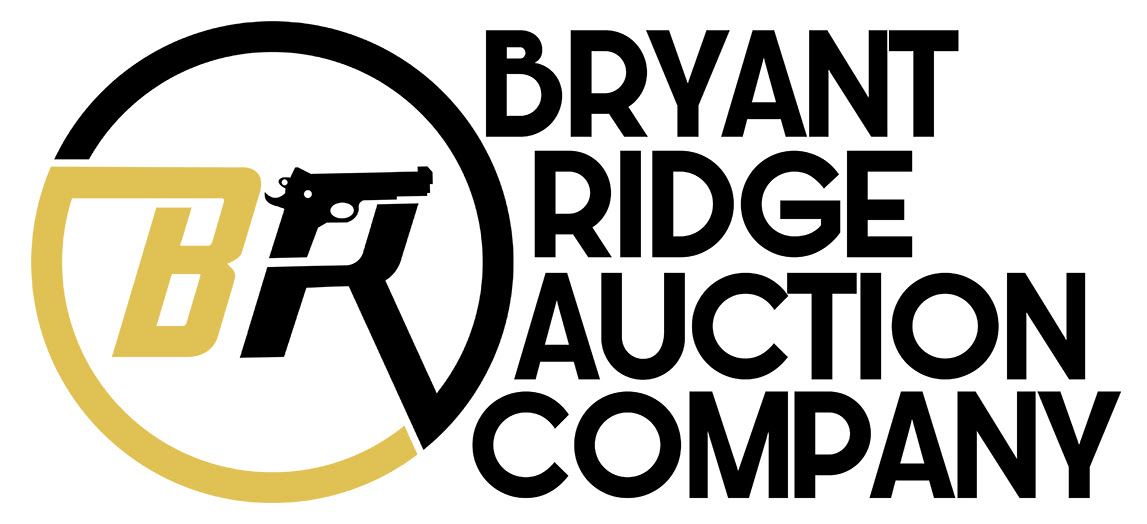Description

Item Description
Bryant Ridge Auction Company is pleased to present this antique flintlock pistol today for a penny start auction, this is an Arabian Miquelet Pistol!
SPECIFICATIONS:
Place of Manufacture: Likely Arabian Peninsula or North Africa
Model: Miquelet Flintlock Pictol
Date of Manufacture: Circa 17th/18th Century
Caliber: ~.65 Caliber
Finish: Patina
Barrel Length: 11"
Stock/Grips: Wooden Stock decorated with brass pins, Coral, and Abalone.
Action: Miquelet Flintlock
Markings: There are no markings on this pistol, though it is highly decorated with engraved brass bands around the barrel and stock. It also features intricate pin-work with pieces of abalone and coral adorning its highly embellished grip. The ornate Butt Cap tip pulls out to reveal an iron spike!
Bryant Ridge's Analysis:
Miquelet lock is a modern term used by collectors and curators for a type of firing mechanism used in muskets and pistols. It is a distinctive form of snaplock, originally as a flint-against-steel ignition form, once prevalent in the Spanish, Portuguese, and Ottoman empires, Italy, North Africa, and the Balkans from the late 16th to the mid-19th century. The term miquelet lock was not recorded until the 19th century, long after the appearance of the mechanism in the 16th century, and is of uncertain origin. One commonly held view is that it was coined by British troops in the Peninsular War to describe the style of musket used by the Miquelet (militia) that had been assigned to the Peninsular Army of the Duke of Wellington. In most of Spain, it was traditionally called the llave de rastrillo ("rake lock"), and in Catalonia and Valencia it was called the pany de pedrenyal ("flint-lock") or simply pedrenyal ("flint").
There is often confusion, or at least a difference of opinion, as to what constitutes a snaplock, snaphaunce, miquelet and a flintlock. The term flintlock was, and still is, often applied to any form of friction (flint) lock other than the wheellock with the various forms sub-categorized as snaphaunce, miquelet, English Doglock, Baltic Lock, and French or "true" flintlock ("true" being the final, widely used form). Strictly speaking, all are flintlocks. However, current usage demands the separation of all other forms of flintlock from the so-called "true flintlock". In the disastrous 1541 campaign of Algiers, weather conditions prevented the firing of arquebuses. Problems were caused on both wheellocks and matchlocks, firstly by wind blowing away the gunpowder when the pan cover was opened during priming, and secondly, by rain wetting matches and gunpowder. The earliest known appearance of the miquelet lock was in Spain within three decades of the Algiers military disaster.
The poet/novelist Ginés Pérez de Hita, in his historical novel Civil Wars of Granada, alludes to his "escopeta de rastrillo" being in common use in Xàtiva and Valencia prior to and during the Alpujarras Rebellion (1567–1571). In his 1605 work Don Quixote, Miguel de Cervantes says that in Catalonia their name was pedrenyal, to the extent that pedrenyal lock means miquelet lock, the long-barreled wheel lock pistols were not called pedrenyals. As both de Hita and Cervantes allude to pistols, pedrenales, and escopetas being in use that were not wheellocks, it is reasonable to suggest some form of flint-against-steel gunlock was in use by the late 16th century. Indeed, from about 1580 on, the listings in estate auctions increasingly referred to "arcabuces de rastrillo" and "escopeta de rastrillo". "Rastrillar", to comb or rake, perfectly describes the action of a flint down a battery (frizzen) face. Some listings used the term "llaves de chispa" (meaning spark locks, applied to all manner of flintlocks, miquelets included). Contemporaries did not use the term "miquelet" to describe any type of lock or firearm.
Probably the oldest surviving example of what certainly qualifies as a patilla miquelet lock is item No.I.20 in the Real Armería, Madrid. That unique item is a combination lance and double-barreled gun; its origin unknown, dated almost certainly before 1600. The archaic form of Spanish lock was further developed by Madrid and provincial gunmakers, almost certainly including the Marquart family of Royal gunmakers, into the Spanish patilla style now most associated with the miquelet.
Return Policy:
We gladly offer a 3 day unfired inspection policy from the time that the firearm is delivered to your FFL. Refunds are available for all qualifying orders.
Model: Miquelet Flintlock Pictol
Date of Manufacture: Circa 17th/18th Century
Caliber: ~.65 Caliber
Finish: Patina
Barrel Length: 11"
Stock/Grips: Wooden Stock decorated with brass pins, Coral, and Abalone.
Action: Miquelet Flintlock
Markings: There are no markings on this pistol, though it is highly decorated with engraved brass bands around the barrel and stock. It also features intricate pin-work with pieces of abalone and coral adorning its highly embellished grip. The ornate Butt Cap tip pulls out to reveal an iron spike!
Bryant Ridge's Analysis:
Miquelet lock is a modern term used by collectors and curators for a type of firing mechanism used in muskets and pistols. It is a distinctive form of snaplock, originally as a flint-against-steel ignition form, once prevalent in the Spanish, Portuguese, and Ottoman empires, Italy, North Africa, and the Balkans from the late 16th to the mid-19th century. The term miquelet lock was not recorded until the 19th century, long after the appearance of the mechanism in the 16th century, and is of uncertain origin. One commonly held view is that it was coined by British troops in the Peninsular War to describe the style of musket used by the Miquelet (militia) that had been assigned to the Peninsular Army of the Duke of Wellington. In most of Spain, it was traditionally called the llave de rastrillo ("rake lock"), and in Catalonia and Valencia it was called the pany de pedrenyal ("flint-lock") or simply pedrenyal ("flint").
There is often confusion, or at least a difference of opinion, as to what constitutes a snaplock, snaphaunce, miquelet and a flintlock. The term flintlock was, and still is, often applied to any form of friction (flint) lock other than the wheellock with the various forms sub-categorized as snaphaunce, miquelet, English Doglock, Baltic Lock, and French or "true" flintlock ("true" being the final, widely used form). Strictly speaking, all are flintlocks. However, current usage demands the separation of all other forms of flintlock from the so-called "true flintlock". In the disastrous 1541 campaign of Algiers, weather conditions prevented the firing of arquebuses. Problems were caused on both wheellocks and matchlocks, firstly by wind blowing away the gunpowder when the pan cover was opened during priming, and secondly, by rain wetting matches and gunpowder. The earliest known appearance of the miquelet lock was in Spain within three decades of the Algiers military disaster.
The poet/novelist Ginés Pérez de Hita, in his historical novel Civil Wars of Granada, alludes to his "escopeta de rastrillo" being in common use in Xàtiva and Valencia prior to and during the Alpujarras Rebellion (1567–1571). In his 1605 work Don Quixote, Miguel de Cervantes says that in Catalonia their name was pedrenyal, to the extent that pedrenyal lock means miquelet lock, the long-barreled wheel lock pistols were not called pedrenyals. As both de Hita and Cervantes allude to pistols, pedrenales, and escopetas being in use that were not wheellocks, it is reasonable to suggest some form of flint-against-steel gunlock was in use by the late 16th century. Indeed, from about 1580 on, the listings in estate auctions increasingly referred to "arcabuces de rastrillo" and "escopeta de rastrillo". "Rastrillar", to comb or rake, perfectly describes the action of a flint down a battery (frizzen) face. Some listings used the term "llaves de chispa" (meaning spark locks, applied to all manner of flintlocks, miquelets included). Contemporaries did not use the term "miquelet" to describe any type of lock or firearm.
Probably the oldest surviving example of what certainly qualifies as a patilla miquelet lock is item No.I.20 in the Real Armería, Madrid. That unique item is a combination lance and double-barreled gun; its origin unknown, dated almost certainly before 1600. The archaic form of Spanish lock was further developed by Madrid and provincial gunmakers, almost certainly including the Marquart family of Royal gunmakers, into the Spanish patilla style now most associated with the miquelet.
Return Policy:
We gladly offer a 3 day unfired inspection policy from the time that the firearm is delivered to your FFL. Refunds are available for all qualifying orders.
















